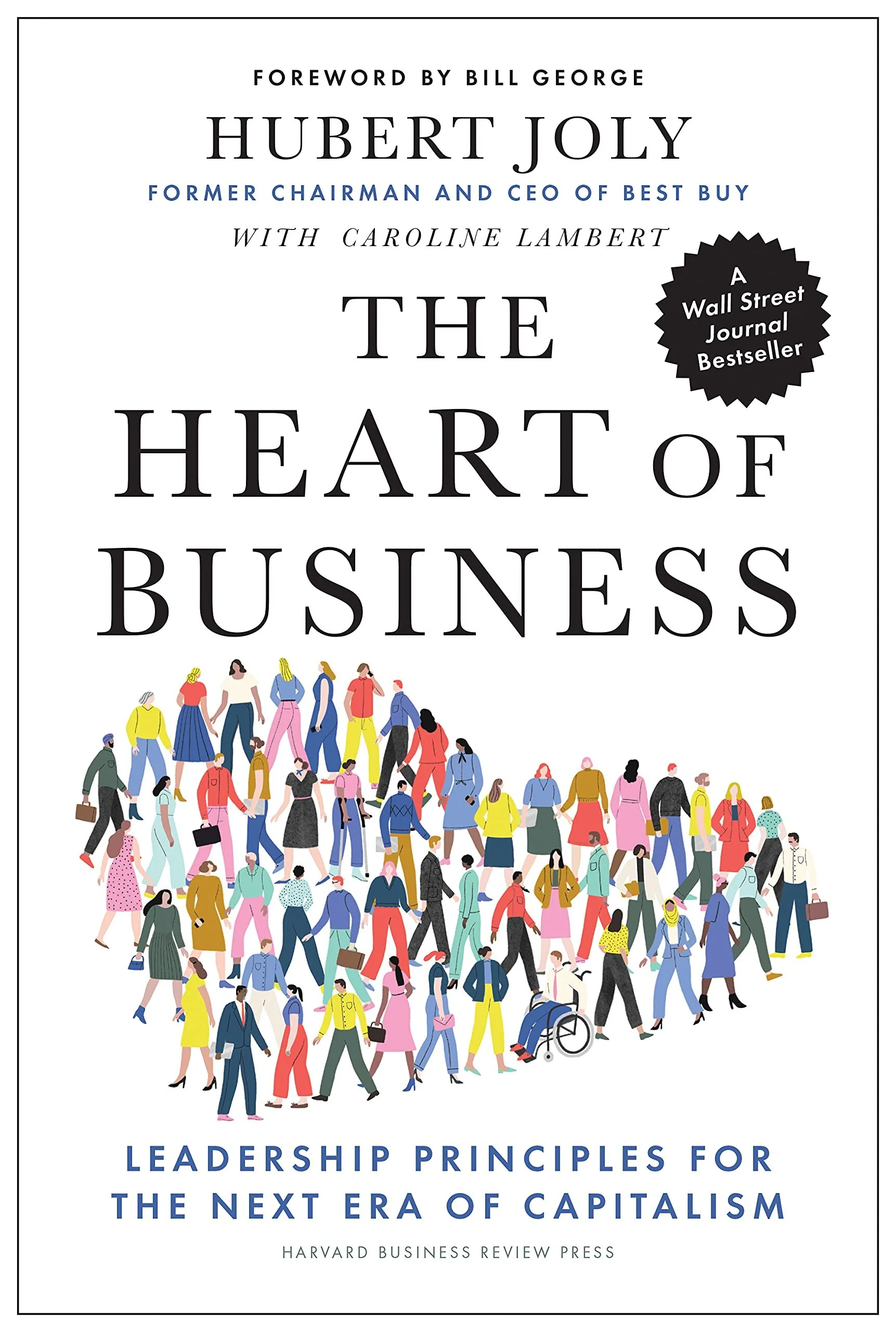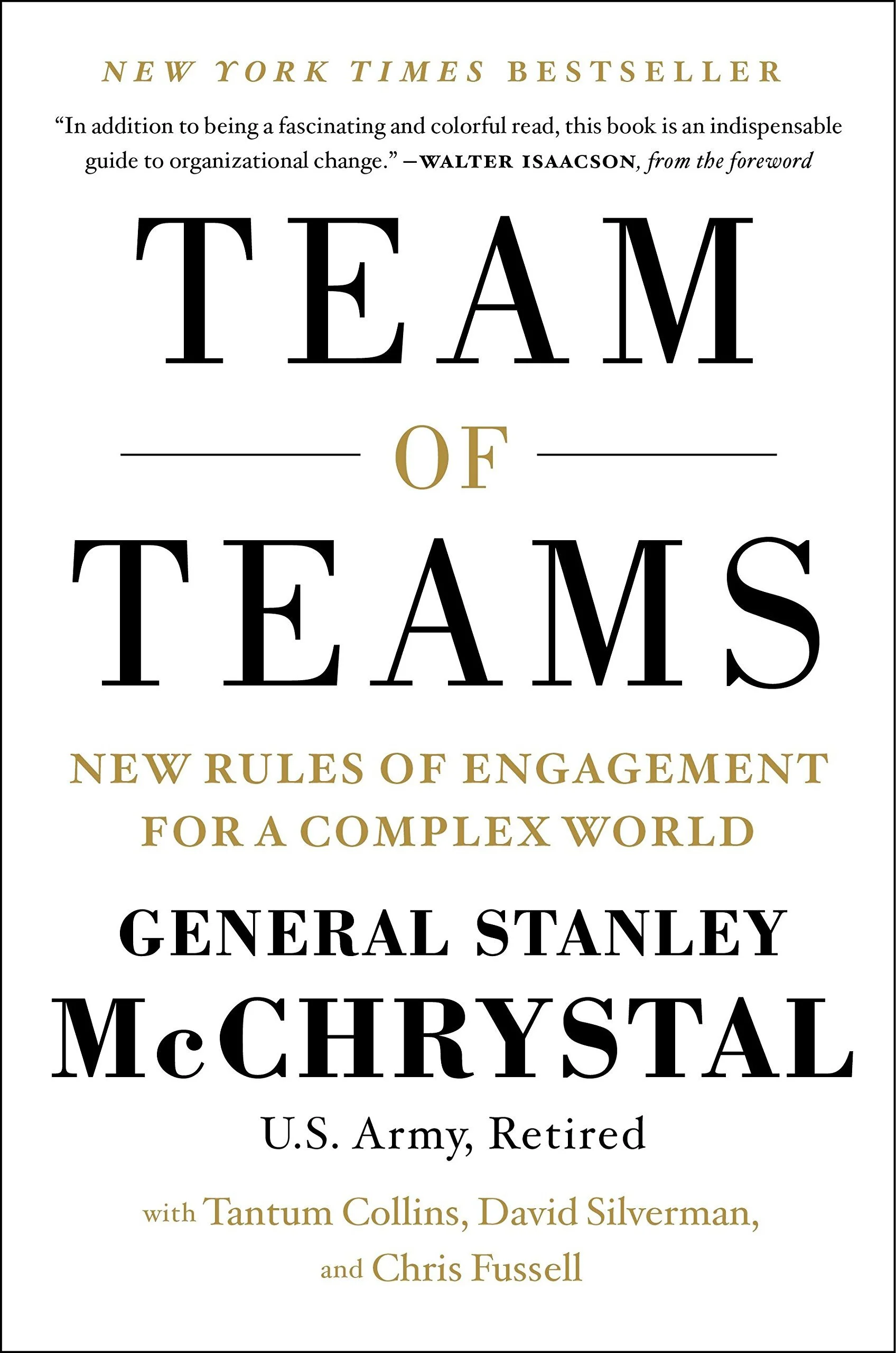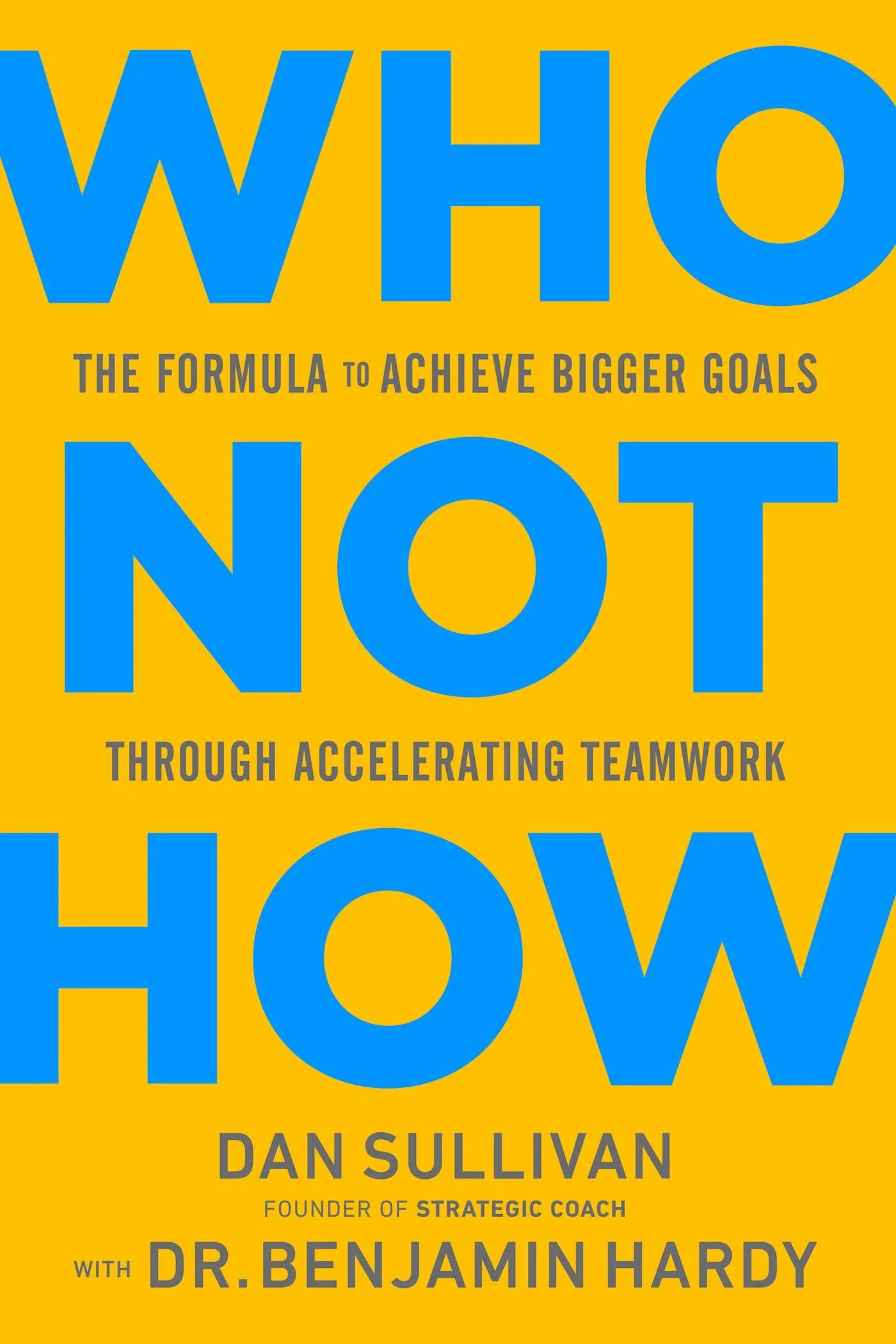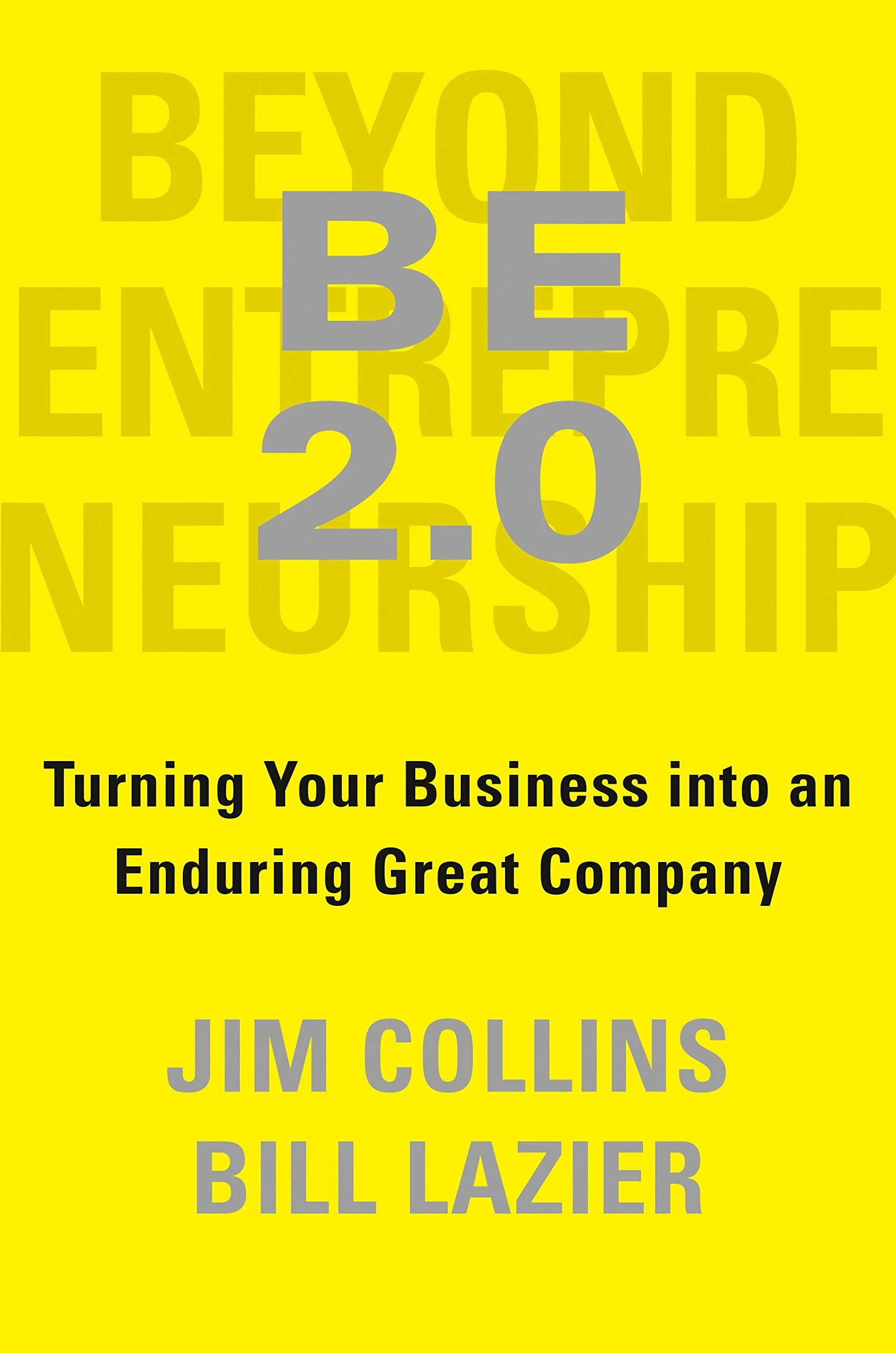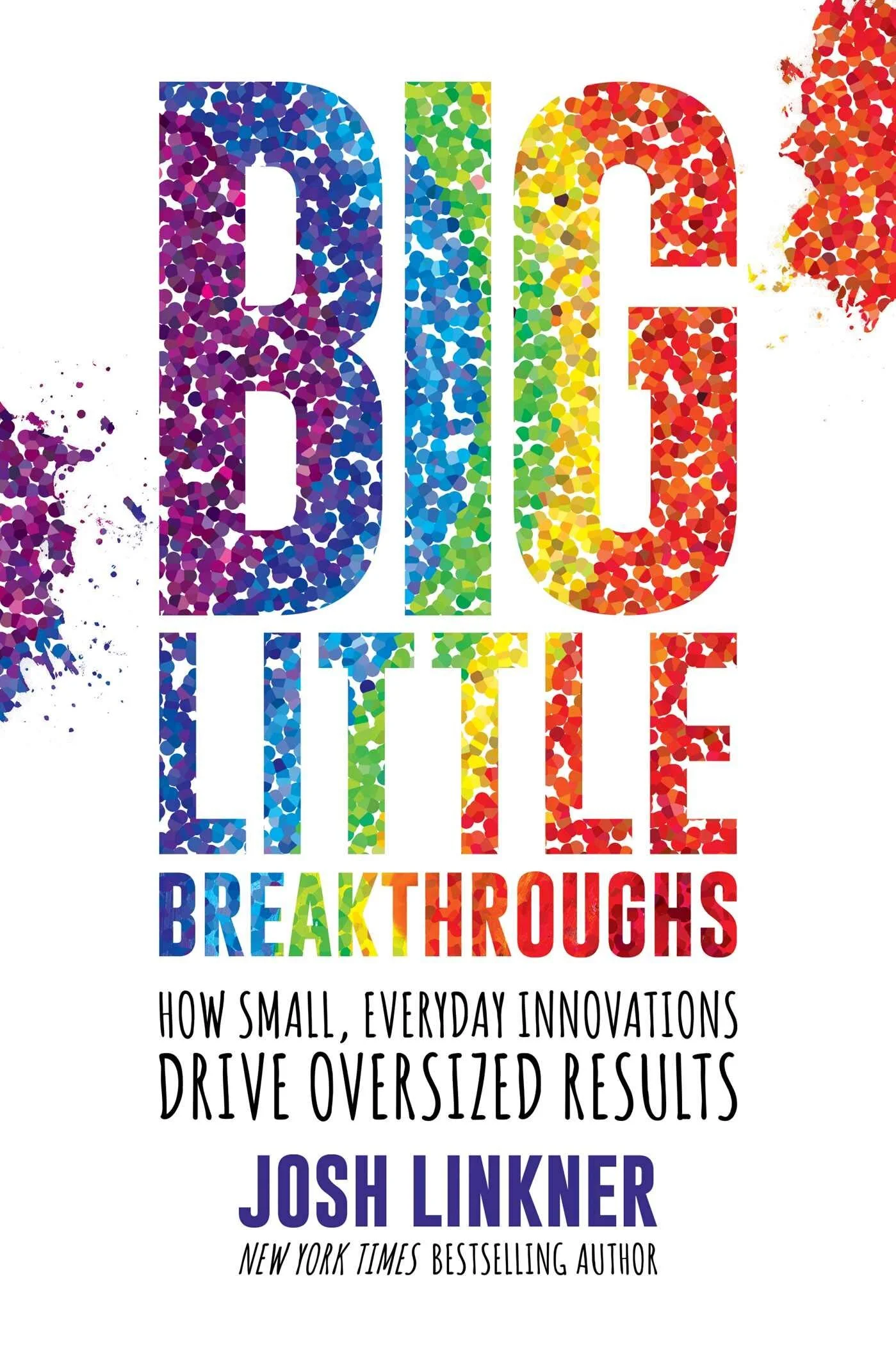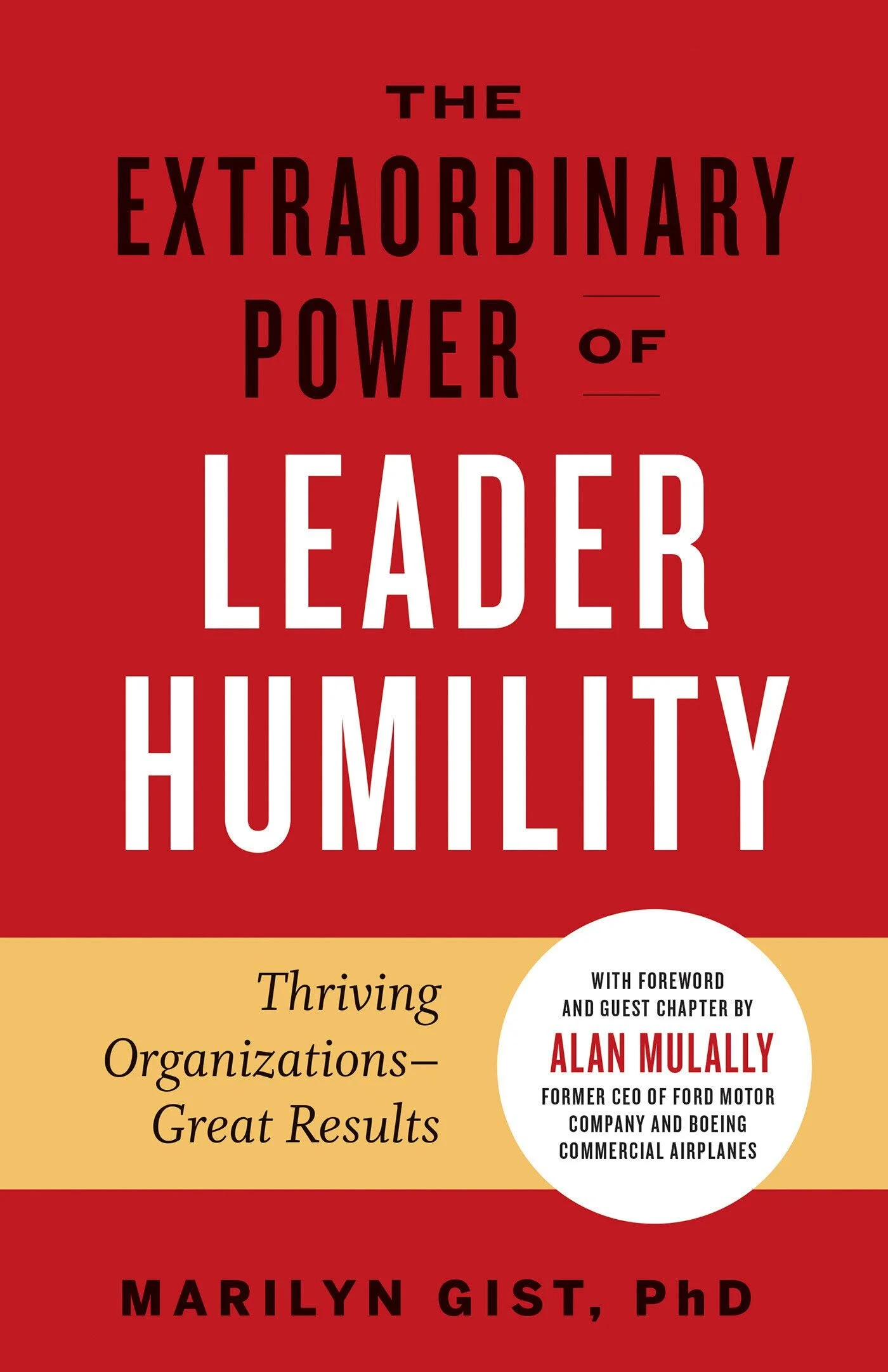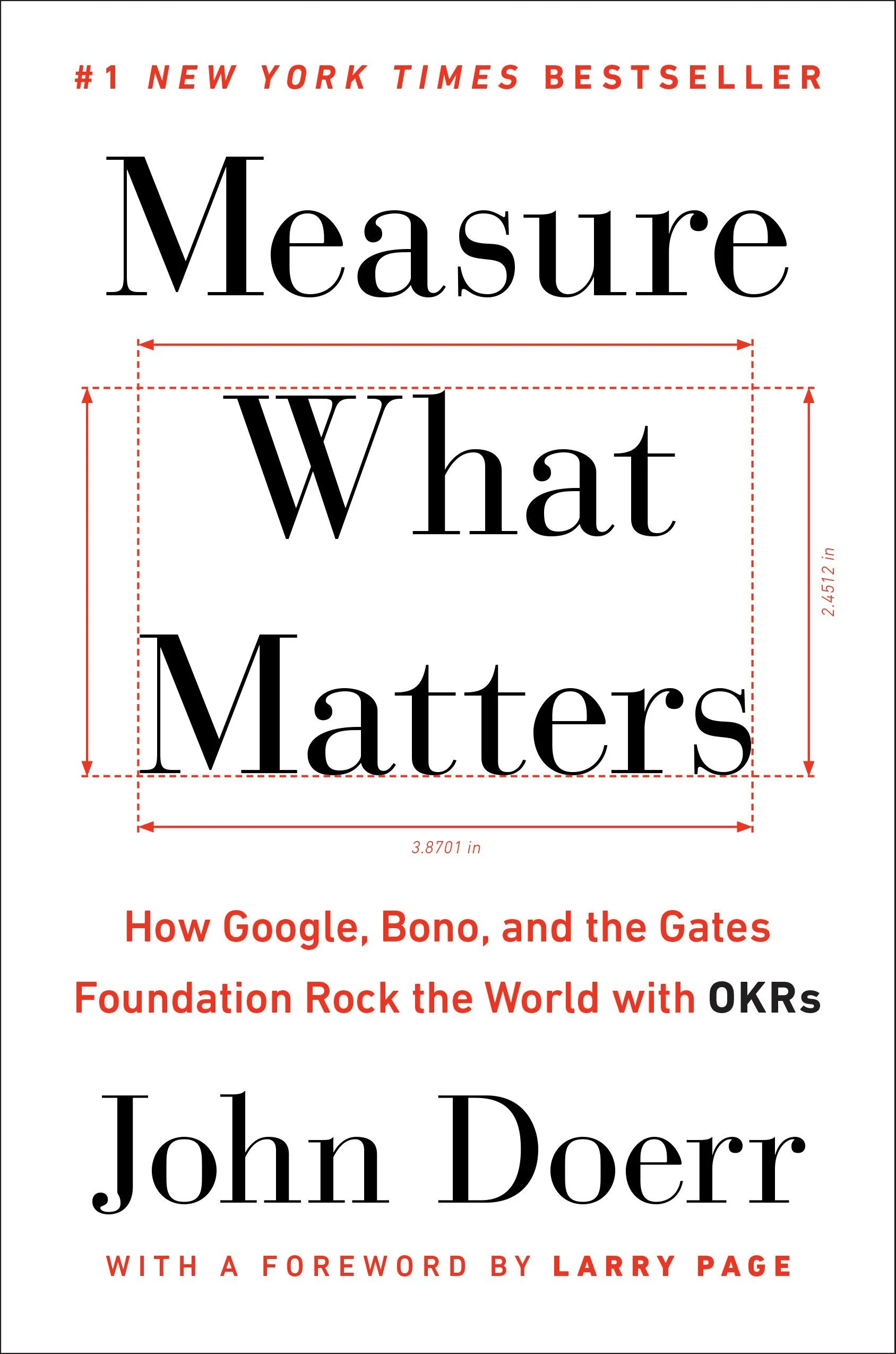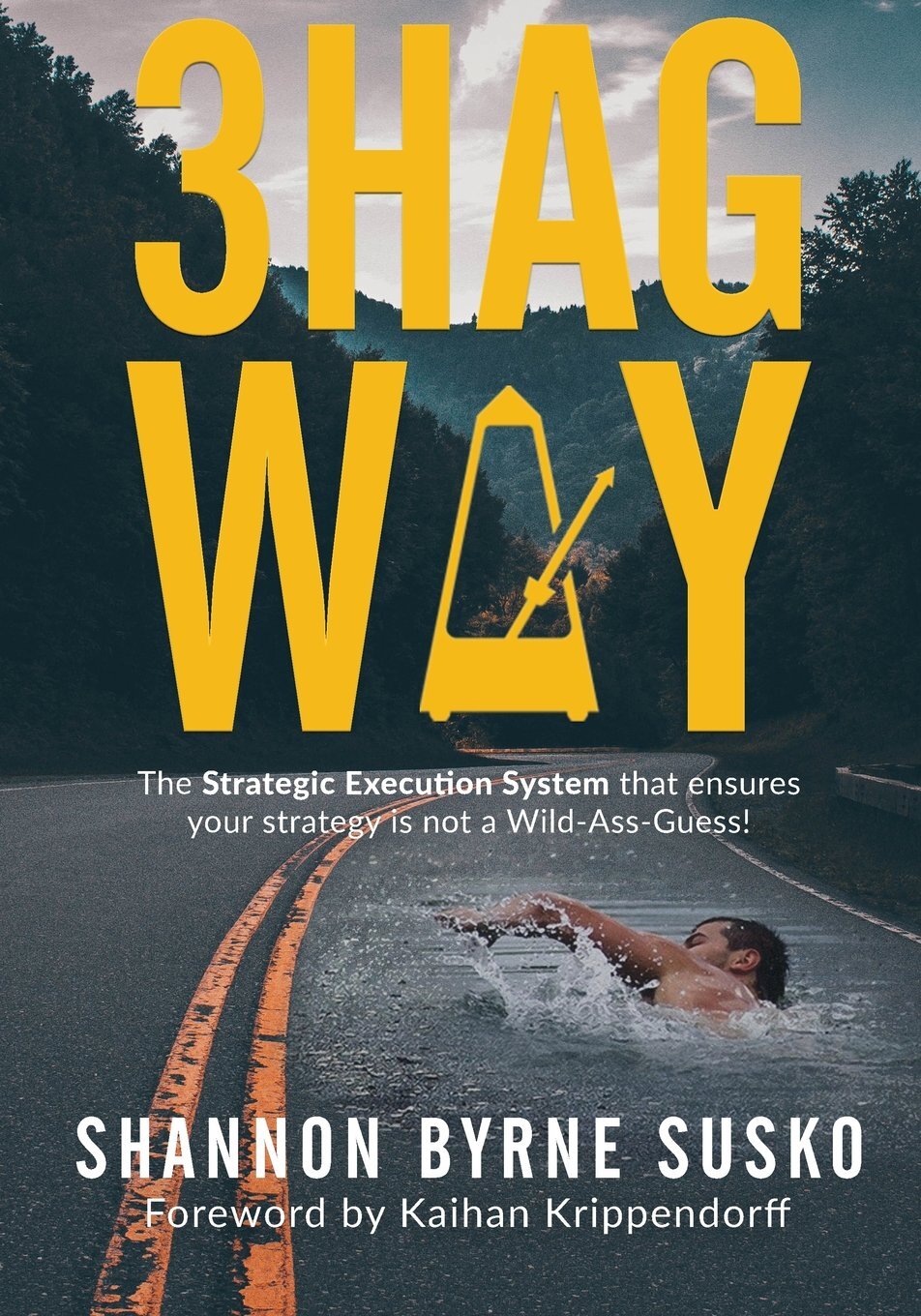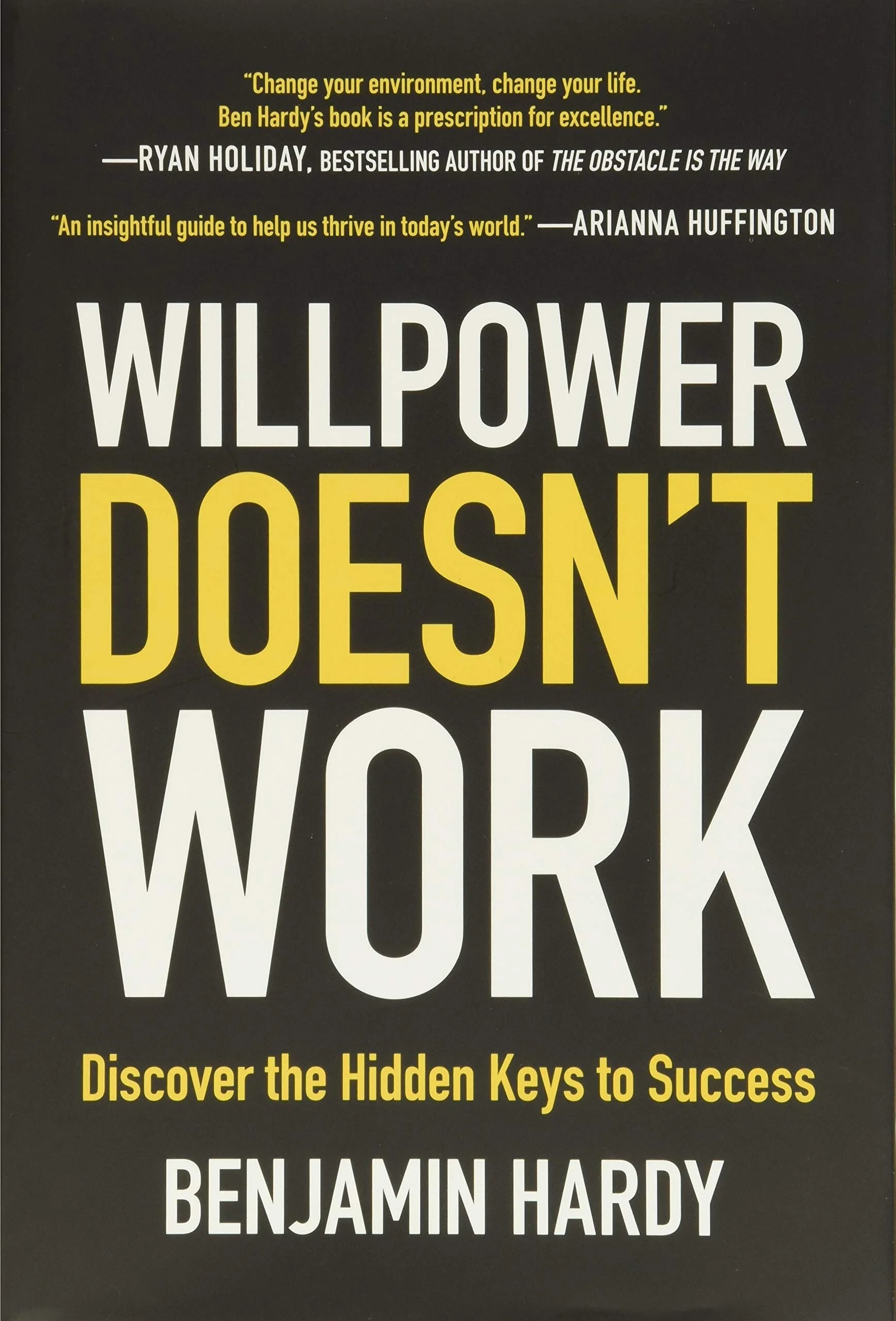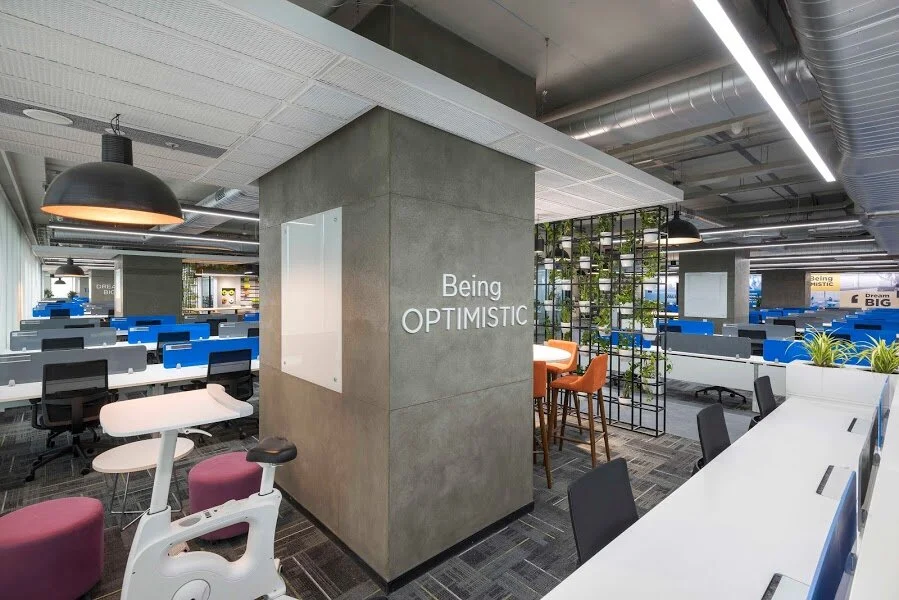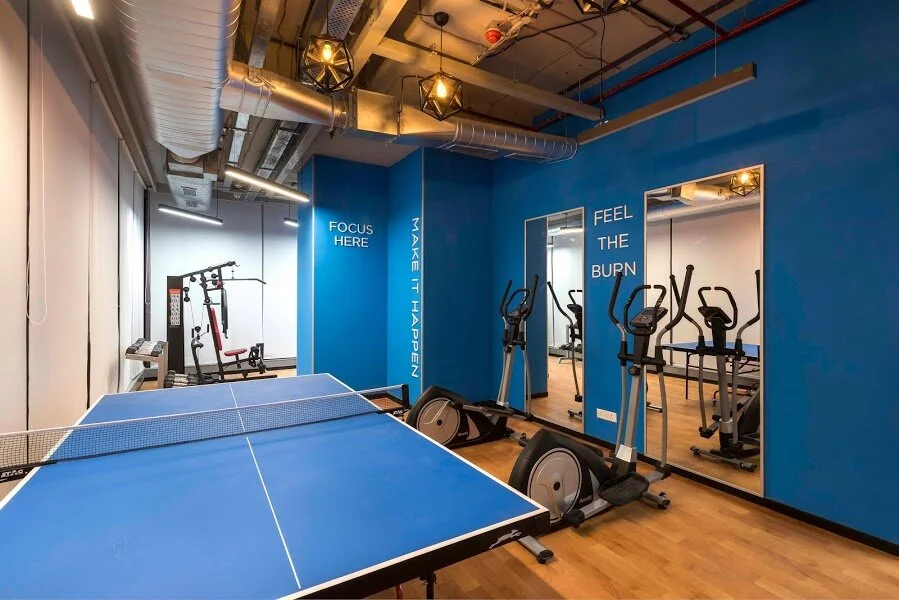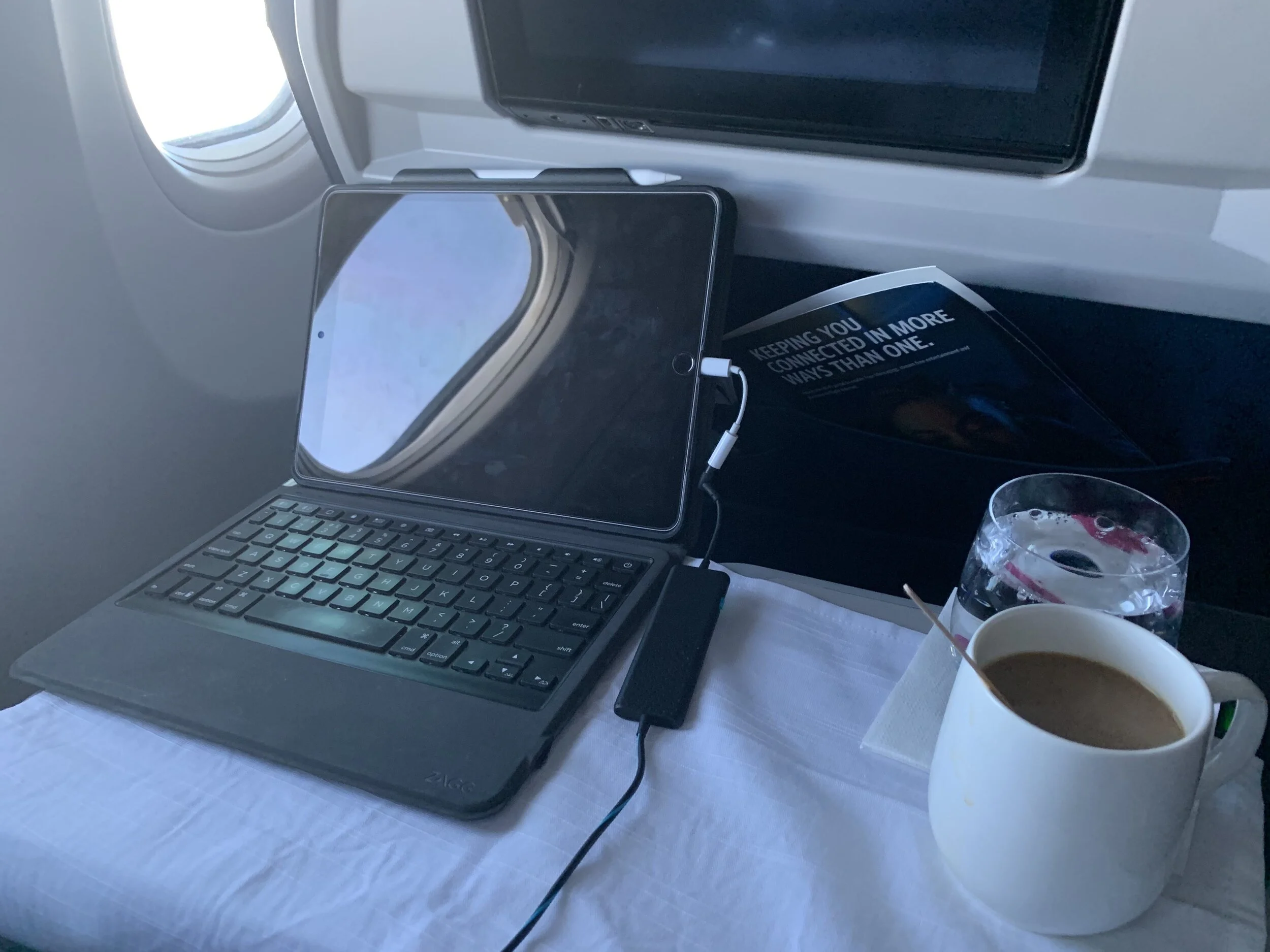As a part of our continued commitment to providing the best resources for leaders to better themselves and thrive, for our October Reading List, we recommend these books: Risk: A User’s Guide - General Stanley McChrystal and Anna Butrico, and We Fed an Island: the True Story of Rebuilding Puerto Rico, One Meal at a Time by José Andrés and Richard Wolffe
Recommended Reading: August 2021
As a part of our continued commitment to providing the best resources for leaders to better themselves and thrive, for our August Reading List, we recommend these books: The Heart of Business: Leadership Principles for the Next Era of Capitalism by Hubert Joly with Caroline Lambert, The HP Way: How Bill Hewlett and I Built Our Company by David Packard, and Team of Teams: New Rules of Engagement for a Complex World by Gen. Stanley McChrystal, Tantum Collins, David Silverman, and Chris Fussell.
The Heart of Business: Leadership Principles for the Next Era of Capitalism - Hubert Joly with Caroline Lambert
How to unleash "human magic" and achieve improbable results.
Hubert Joly, former CEO of Best Buy and orchestrator of the retailer's spectacular turnaround, unveils his personal playbook for achieving extraordinary outcomes by putting people and purpose at the heart of business.
Back in 2012, "Everyone thought we were going to die," says Joly. Eight years later, Best Buy was transformed as Joly and his team rebuilt the company into one of the nation's favorite employers, vastly increased customer satisfaction, and dramatically grew Best Buy's stock price. Joly and his team also succeeded in making Best Buy a leader in sustainability and innovation.
In The Heart of Business, Joly shares the philosophy behind the resurgence of Best Buy: pursue a noble purpose, put people at the center of the business, create an environment where every employee can blossom, and treat profit as an outcome, not the goal.
This approach is easy to understand, but putting it into practice is not so easy. It requires radically rethinking how we view work, how we define companies, how we motivate, and how we lead. In this book Joly shares memorable stories, lessons, and practical advice, all drawn from his own personal transformation from a hard-charging McKinsey consultant to a leader who believes in human magic.
The Heart of Business is a timely guide for leaders ready to abandon old paradigms and lead with purpose and humanity. It shows how we can reinvent capitalism so that it contributes to a sustainable future.
The HP Way: How Bill Hewlett and I Built Our Company - David Packard
Much more personal than standard corporate histories, David Packard's The HP Way provides insights into managing and motivating people and inspiration for would–be entrepreneurs. This bestselling classic joins the Collins Business Essentials line–up with a new Note from Steve Jobs.
From a one–car–garage company to a multibillion–dollar industry, the rise of Hewlett–Packard is an extraordinary tale of vision, innovation and hard work. Conceived in 1939, Hewlett–Packard earned success not only as a result of its engineering know–how and cutting–edge product ideas, but also because of the unique management style it developed – a way of doing things called 'the HP way'.
Decades before today's creative management trends, Hewlett–Packard invented such strategies as 'walk–around management', 'flextime', and 'quality cycles'. Always sensitive to the needs of its customers and responsive to employee input, Hewlett–Packard earned massive steady growth that far outshone its competitors' vacillating fortunes, even with radically different products from those responsible for its initial boom.
For entrepreneurs and managers alike, the wisdom found in these pages is invaluable if they want their businesses to gain steady growth and consistent success.
Team of Teams: New Rules of Engagement for a Complex World- Gen. Stanley McChrystal, Tantum Collins, David Silverman, & Chris Fussell
The retired four-star general and best-selling author of My Share of the Task shares a powerful new leadership model
Former general Stanley McChrystal held a key position for much of the War on Terror, as head of the Joint Special Operations Command. In Iraq he found that despite the vastly superior resources, manpower, and training of the US military, Al Qaeda had an advantage because of its structure as a loose network of small, independent cells. Those cells wreaked havoc by always staying one step ahead, sharing knowledge with each other via high-tech communications.
To defeat such an agile enemy, JSOC had to change its focus from efficiency to adaptability. McChrystal led the transformation of his forces into a network that combined robust centralized communication ("shared consciousness") with decentralized managerial authority ("empowered execution").
Now he shows not only how the military made that transition but also how similar shifts are possible in all kinds of organizations, from large companies to startups to charities to government agencies. In a world of rapid change, the best organizations think and act like a team of teams, embracing small groups that combine the freedom to experiment with a relentless drive to share what they've learned.
McChrystal and his colleagues explain their process for helping organizations embrace this model. They also share fascinating research and examples from settings as diverse as emergency rooms and NASA's mission control center.
Recommended Reading: July 2021
As a part of our continued commitment to providing the best resources for leaders to better themselves and thrive, for our July Reading List, we recommend these books: Who Not How: The Formula to Achieve Bigger Goals by Dan Sullivan with Dr. Benjamin Hardy, and BE 2.0 (Beyond Entrepreneurship 2.0): Turning Your Business into an Enduring Great Company by Jim Collins.
Who Not How: The Formula to Achieve Bigger Goals - Dan Sullivan with Dr. Benjamin Hardy
The world's foremost entrepreneurial coach shows you how to make a mindset shift that opens the door to explosive growth and limitless possibility--in your business and your life.
Have you ever had a new idea or a goal that excites you... but not enough time to execute it? What about a goal you really want to accomplish...but can't because instead of taking action, you procrastinate? Do you feel like the only way things are going to get done is if you do them? But what if it wasn't that way? What if you had a team of people around you that helped you accomplish your goals (while you helped them accomplish theirs)?
When we want something done, we've been trained to ask ourselves: "How can I do this?" Well, there is a better question to ask. One that unlocks a whole new world of ease and accomplishment. Expert coach Dan Sullivan knows the question we should ask instead: "Who can do this for me?"
This may seem simple. And it is. But don't let the lack of complexity fool you. By mastering this question, you will quickly learn how billionaires and successful entrepreneurs like Dan build incredible businesses and personal freedom.
This book will teach you how to make this essential paradigm-shift so you can:
Build a successful business effectively while not killing yourself
Immediately free-up 1,000+ hours of work that you shouldn't be doing anyway
Bypass the typical scarcity and decline of aging and other societal norms
Increase your vision in all areas of life and build teams of WHOs to support you in that vision
Never be limited in your goals and ambitions again
Expand your abundance of wealth, innovation, relationships, and joy
Build a life where everything you do is your choice--how you spend your time, how much money you make, the quality of your relationships, and the type of work you do
Making this shift involves retraining your brain to stop limiting your potential based on what you solely can do and instead focus on the nearly infinite and endless connections between yourself and other people as well as the limitless transformation possible through those connections.
BE 2.0 (Beyond Entrepreneurship 2.0): Turning Your Business into an Enduring Great Company - Jim Collins
From Jim Collins, the most influential business thinker of our era, comes an ambitious upgrade of his classic, Beyond Entrepreneurship, that includes all-new findings and world-changing insights.
What's the roadmap to create a company that not only survives its infancy but thrives, changing the world for decades to come?
Nine years before the publication of his epochal bestseller Good to Great, Jim Collins and his mentor, Bill Lazier, answered this question in their bestselling book, Beyond Entrepreneurship.
Beyond Entrepreneurship left a definitive mark on the business community, influencing the young pioneers who were, at that time, creating the technology revolution that was birthing in Silicon Valley. Decades later, successive generations of entrepreneurs still turn to the strategies outlined in Beyond Entrepreneurship to answer the most pressing business questions.
BE 2.0 is a new and improved version of the book that Jim Collins and Bill Lazier wrote years ago. In BE 2.0, Jim Collins honors his mentor, Bill Lazier, who passed away in 2005, and reexamines the original text of Beyond Entrepreneurship with his 2020 perspective.
The book includes the original text of Beyond Entrepreneurship, as well as four new chapters and fifteen new essays. BE 2.0 pulls together the key concepts across Collins' thirty years of research into one integrated framework called The Map. The result is a singular reading experience, which presents a unified vision of company creation that will fascinate not only Jim's millions of dedicated readers worldwide, but also introduce a new generation to his remarkable work.
Recommended Reading: June 2021
As a part of our continued commitment to providing the best resources for leaders to better themselves and thrive, for our June Reading List, we recommend these books: Metronomics: One United System to Grow Up Your Team, Company, and Life by Shannon Susko Play Bigger: How Pirates, Dreamers, and Innovators Create and Dominate Markets by Al Ramadan, Dave Peterson, Christopher Lochhead, & Kevin Maney, and A Better Life for Their Children: Julius Rosenwald, Booker T. Washington, and the 4,978 Schools That Changed America by Andrew Feiler (Author), John Lewis (Foreword), Jeanne Cyriaque (Contributor), Brent Leggs (Contributor).
Metronomics: One United System to Grow Up Your Team, Company, and Life - Shannon Susko
As a business leader, you’ve read dozens of books by the top thought leaders, learning from their research, principles, and tools. Each book dives deep into a specific area of expertise—strategy, execution, cash, people, culture, and leadership. All share powerful concepts on what to do to grow your business. But how do you efficiently unite these tools into a regimen that works for not just one specific area of your business, but for your entire team, company, and life?
Metronomics unites top business thought leadership with over twenty years of proven practical experience. The outcome is a prescriptive progressive growth system for every business. In this book, you’ll learn how to build a high-performing business team that achieves superior results with ease, speed, and confidence. You’ll learn the practical progression that ensures your team is fiercely connected to your strategic execution system. No matter what level you and your team are at right now, Metronomics will meet you where you are—and grow with you to the next level and beyond.
The best-kept business secret for the past twenty years, Metronomics will allow your company to win your business Olympics every year, and as a leader, it will set you free.
Play Bigger: How Pirates, Dreamers, and Innovators Create and Dominate Markets - Al Ramadan, Dave Peterson, Christopher Lochhead, & Kevin Maney
The founders of a respected Silicon Valley advisory firm study legendary category-creating companies and reveal a groundbreaking discipline called category design.
Winning today isn’t about beating the competition at the old game. It’s about inventing a whole new game—defining a new market category, developing it, and dominating it over time. You can’t build a legendary company without building a legendary category. If you think that having the best product is all it takes to win, you’re going to lose.
In this farsighted, pioneering guide, the founders of Silicon Valley advisory firm Play Bigger rely on data analysis and interviews to understand the inner workings of “category kings”— companies such as Amazon, Salesforce, Uber, and IKEA—that give us new ways of living, thinking or doing business, often solving problems we didn’t know we had.
In Play Bigger, the authors assemble their findings to introduce the new discipline of category design. By applying category design, companies can create new demand where none existed, conditioning customers’ brains so they change their expectations and buying habits. While this discipline defines the tech industry, it applies to every kind of industry and even to personal careers.
Crossing the Chasm revolutionized how we think about new products in an existing market. The Innovator’s Dilemma taught us about disrupting an aging market. Now, Play Bigger is transforming business once again, showing us how to create the market itself.
A Better Life for Their Children: Julius Rosenwald, Booker T. Washington, and the 4,978 Schools That Changed America - Andrew Feiler (Author), John Lewis (Foreword), Jeanne Cyriaque (Contributor), Brent Leggs (Contributor)
A Sarah Mills Hodge Fund publication
Born to Jewish immigrants, Julius Rosenwald rose to lead Sears, Roebuck & Company and turn it into the world’s largest retailer. Born into slavery, Booker T. Washington became the founding principal of Tuskegee Institute. In 1912 the two men launched an ambitious program to partner with black communities across the segregated South to build public schools for African American children. This watershed moment in the history of philanthropy―one of the earliest collaborations between Jews and African Americans―drove dramatic improvement in African American educational attainment and fostered the generation who became the leaders and foot soldiers of the civil rights movement.
Of the original 4,978 Rosenwald schools built between 1917 and 1937 across fifteen southern and border states, only about 500 survive. While some have been repurposed and a handful remain active schools, many remain unrestored and at risk of collapse. To tell this story visually, Andrew Feiler drove more than twenty-five thousand miles, photographed 105 schools, and interviewed dozens of former students, teachers, preservationists, and community leaders in all fifteen of the program states.
A Better Life for their Children includes eighty-five duotone images that capture interiors and exteriors, schools restored and yet-to-be restored, and portraits of people with unique, compelling connections to these schools. Brief narratives written by Feiler accompany each photograph, telling the stories of Rosenwald schools’ connections to the Trail of Tears, the Great Migration, the Tuskegee Airmen, Brown v. Board of Education, embezzlement, murder, and more.
Beyond the photographic documentation, A Better Life for Their Children includes essays from three prominent voices. Congressman John Lewis, who attended a Rosenwald school in Alabama, provides an introduction; preservationist Jeanne Cyriaque has penned a history of the Rosenwald program; and Brent Leggs, director of African American Cultural Heritage at the National Trust for Historic Preservation, has written a plea for preservation that serves as an afterword.
Recommended Reading: May 2021
As a part of our continued commitment to providing the best resources for leaders to better themselves and thrive, for our May Reading List, we recommend these two books: Big Little Breakthroughs: How Small, Everyday Innovations Drive Oversized Results by Josh Linkner, and The Extraordinary Power of Leader Humility: Thriving Organizations – Great Results by Marilyn Gist, PhD.
Big Little Breakthroughs: How Small, Everyday Innovations Drive Oversized Results - Josh Linkner
A surprisingly simple approach to help everyday people become everyday innovators.
The pressure to generate big ideas can feel overwhelming. We know that bold innovations are critical in these disruptive and competitive times, but when it comes to breakthrough thinking, we often freeze up.
Instead of shooting for a $10-billion payday or a Nobel Prize, the most prolific innovators focus on Big Little Breakthroughs—small creative acts that unlock massive rewards over time. By cultivating daily micro-innovations, individuals and organizations are better equipped to tackle tough challenges and seize transformational opportunities.
How did a convicted drug dealer launch and scale a massively successful fitness company? What core mindset drove LEGO to become the largest toy company in the world? How did a Pakistani couple challenge the global athletic shoe industry? What simple habits led Lady Gaga, Banksy, and Lin-Manuel Miranda to their remarkable success?
Big Little Breakthroughs isn’t just for propeller-head inventors, fancy-pants CEOs, or hoodie-donning tech billionaires. Rather, it’s a surpassingly simple system to help everyday people become everyday innovators.
The Extraordinary Power of Leader Humility: Thriving Organizations – Great Results - Marilyn Gist, PhD
“This inspiring book belongs on the desk of every CEO and politician. With eye-opening case studies and recommended behaviors in every chapter, it's an indispensable user guide for servant leaders.”
—Ken Blanchard, coauthor of The New One Minute Manager and coeditor of
Servant Leadership in Action
On the most fundamental level, leaders must bring divergent groups together and forge a consensus on a path forward. But what makes that possible? Humility—a deep regard for the dignity of others—is the key, says distinguished leadership educator Marilyn Gist.
Leadership is a relationship, and humility is the foundation for all healthy relationships. Leader humility can increase engagement and retention. It inspires and motivates. Gist offers a model of leader humility derived from three questions people ask of their leaders: Who are you? Where are we going? Do you see me? She explores each of these questions in depth, as well as the six key qualities of leader humility: a balanced ego, integrity, a compelling vision, ethical strategies, generous inclusion, and a developmental focus.
Much of this book is based on Gist's interviews with a dozen distinguished leaders of organizations such as the Mayo Clinic, Costco, REI, Alaska Airlines, Starbucks, and others. And the foreword and a guest chapter are written by Alan Mulally, the legendary leader who brought Ford back from the brink of bankruptcy after the 2008 financial collapse and whose work is an exemplar of leader humility.
Recommended Reading: April 2021
As a part of our continued commitment to providing the best resources for leaders to better themselves and thrive, for our April Reading List, we recommend these three books: Unreasonable Success and How to Achieve It by Richard Koch, Simple Numbers, Straight Talk, Big Profits!: 4 Keys to Unlock Your Business Potential by Greg Crabtree, and Measure What Matters: How Google, Bono, and the Gates Foundation Rock the World with OKRs by John Doerr.
Unreasonable Success and How to Achieve It - Richard Koch
Can We Map Success?
Successful people typically don’t plan their success. Instead they develop a unique philosophy or attitude that works for them. They stumble across strategies which are shortcuts to success, and latch onto them. Events hand them opportunities they could not have anticipated. Often their peers with equal or greater talent fail while they succeed. It is too easy to attribute success to inherent, unstoppable genius.
Bestselling author and serial entrepreneur Richard Koch charts a map of success, identifying the nine key attitudes and strategies can propel anyone to new heights of accomplishment:
Self-belief
Olympian Expectations
Transforming Experiences
One Breakthrough Achievement
Make Your Own Trail
Find and Drive Your Personal Vehicle
Thrive on Setbacks
Acquire Unique Intuition
Distort Reality
With this book, you can embark on a journey towards a new, unreasonably successful future.
Simple Numbers, Straight Talk, Big Profits!: 4 Keys to Unlock Your Business Potential - Greg Crabtree
Simple Numbers can guide you to increased business profitability!
Take the mystery out of small business finance with this no-frills guide to understanding the numbers that will guide your business out of any financial black hole. Author Greg Crabtree, a successful accountant, small business advisor, and popular presenter, shows you how to use your firm's key financial indicators as a basis for smart business decisions as you grow your firm from startup to $5 million (and, more!) in annual revenue.
Jargon free, and presented in an easy-to-follow, step-by-step format, with plenty of real-world examples, Crabtree's down-to-earth discussion highlights the most common financial errors committed by small businesses, and how to avoid them. You'll be fascinated to learn:
Why your numbers are lying to you (and why you are the cause!)
How labor productivity is the key to profitability and simplifying human resource decisions
Why the amount of tax you pay is your #1 key performance indicator
Take advantage of Crabtree's years of experience teaching clients how to build successful businesses by ''seeing beyond numbers'' with this step-by-step guide to increasing your businesses profitability.
Measure What Matters: How Google, Bono, and the Gates Foundation Rock the World with OKRs - John Doerr
In this #1 New York Times Bestseller, legendary venture capitalist John Doerr reveals how the goal-setting system of Objectives and Key Results (OKRs) has helped tech giants from Intel to Google achieve explosive growth—and how it can help any organization thrive.
In the fall of 1999, John Doerr met with the founders of a start-up whom he'd just given $12.5 million, the biggest investment of his career. Larry Page and Sergey Brin had amazing technology, entrepreneurial energy, and sky-high ambitions, but no real business plan. For Google to change the world (or even to survive), Page and Brin had to learn how to make tough choices on priorities while keeping their team on track. They'd have to know when to pull the plug on losing propositions, to fail fast. And they needed timely, relevant data to track their progress—to measure what mattered.
Doerr taught them about a proven approach to operating excellence: Objectives and Key Results. He had first discovered OKRs in the 1970s as an engineer at Intel, where the legendary Andy Grove ("the greatest manager of his or any era") drove the best-run company Doerr had ever seen. Later, as a venture capitalist, Doerr shared Grove's brainchild with more than fifty companies. Wherever the process was faithfully practiced, it worked.
In this goal-setting system, objectives define what we seek to achieve; key results are how those top-priority goals will be attained with specific, measurable actions within a set time frame. Everyone's goals, from entry level to CEO, are transparent to the entire organization.
The benefits are profound. OKRs surface an organization's most important work. They focus effort and foster coordination. They keep employees on track. They link objectives across silos to unify and strengthen the entire company. Along the way, OKRs enhance workplace satisfaction and boost retention.
In Measure What Matters, Doerr shares a broad range of first-person, behind-the-scenes case studies, with narrators including Bono and Bill Gates, to demonstrate the focus, agility, and explosive growth that OKRs have spurred at so many great organizations. This book will help a new generation of leaders capture the same magic.
Recommended Reading: March 2021
As a part of our continued commitment to providing the best resources for leaders to better themselves and thrive, for our March Reading List, we recommend these two books: Scaling Up: How a Few Companies Make It...and Why the Rest Don't (Rockefeller Habits 2.0) by Verne Harnish and 3HAG WAY: The Strategic Execution System that ensures your strategy is not a Wild-Ass-Guess! by Shannon Byrne Susko.
Our theme this month: getting back to the basics.
We know 2020 and the beginning of 2021 has been challenging. We firmly believe that the tools and wisdom found in these books will help us to not only get through the last months of the pandemic, but to also take advantage of the ample opportunities in front of us so we can effectively scale our companies again.
Scaling Up: How a Few Companies Make It...and Why the Rest Don't (Rockefeller Habits 2.0) - Verne Harnish
This book was the winner of the International Book Awards for General Business and the winner of the Readers' Favorite International Book Award for Non-Fiction Business
It’s been over a decade since Verne Harnish’s best-selling book Mastering the Rockefeller Habits was first released. Scaling Up (Rockefeller Habits 2.0) is the first major revision of this business classic which details practical tools and techniques for building an industry-dominating business. This book is written so everyone ― from frontline employees to senior executives ― can get aligned in contributing to the growth of a firm. Scaling Up focuses on the four major decision areas every company must get right: People, Strategy, Execution, and Cash. The book includes a series of new one-page tools including the updated One-Page Strategic Plan and the Rockefeller Habits ChecklistTM, which more than 40,000 firms around the globe have used to scale their companies successfully ― many to $10 million, $100 million, and $1 billion and beyond – while enjoying the climb!
3HAG WAY: The Strategic Execution System that ensures your strategy is not a Wild-Ass-Guess! - Shannon Byrne Susko
Every company needs a 3HAG—a 3 Year Highly Achievable Goal! The 3HAG WAY is a prescriptive framework that takes the guessing out of your strategy and ensures that you and your whole team are confident in where you are going. It breaks your strategy down into a clear and simple picture—so clear and simple that the whole team will be able to see where the company is going and where it will end up in three years’ time. This strategic clarity will align, engage, and empower your team to make confident decisions in order to achieve your 3HAG.
You’ll find step-by-step instructions to gut out your first 3HAG while building the confidence required to execute with speed toward your goals. The core purpose of this book is to have a significant impact on CEOs, leaders, and their companies and enable them to confidently realize their goals more quickly than they thought possible. And by achieving these goals they will positively impact their families and their communities.
Whether you run a team of four, forty or 40,000, the tools and framework in this book will help you articulate your company’s strategy in simple terms and create a Strategic Execution System that works. We’re going to take each step of the strategy and break it down for you so that you know exactly how to take these steps and why they’re critical to achieving your goal.
Recommended Reading: February 2021
As a part of our continued commitment to providing the best resources for leaders to better themselves and thrive, for our February Reading List, we recommend these three books: Good Company by Arthur Blank, Willpower Doesn't Work: Discover the Hidden Keys to Success by Benjamin Hardy, and Business Made Simple: 60 Days to Master Leadership, Sales, Marketing, Execution, Management, Personal Productivity and More by Donald Miller.
Good Company - Arthur Blank
The Home Depot cofounder and owner of the NFL's Atlanta Falcons and MLS's Atlanta United shares a vision and a roadmap for values-based business.
Arthur M. Blank believes that for good companies, purpose and profit can-and should-go hand in hand. And he should know. Together with cofounder Bernie Marcus, Blank built The Home Depot from an idea and a dream to a $50 billion-dollar company, the leading home improvement retailer in the world. And even while opening a new store every 42 hours, they never lost sight of their commitment to care for their people and communities. In fact, in 2001, The Home Depot was voted America's most socially responsible company.
Blank left The Home Depot that same year with a burning question: Could the values and culture that made that company great be replicated? Good Company takes readers inside the story of how he did just that-turning around a struggling NFL team, rebooting a near-bankrupt retail chain, building a brand-new stadium, revitalizing a blighted neighborhood, launching a startup soccer club, and more.
"When good companies put the wellbeing of their customers, their associates, and their communities first, financial success will follow," Blank writes. "The entrepreneurs and business leaders of today and tomorrow have an extraordinary opportunity: to prove that through upholding values we can create value-for the company, for the customer, and for the community."
Willpower Doesn't Work: Discover the Hidden Keys to Success - Benjamin P. Hardy
We rely on willpower to create change in our lives...but what if we're thinking about it all wrong? In Willpower Doesn't Work, Benjamin Hardy explains that willpower is nothing more than a dangerous fad-one that is bound to lead to failure. Instead of "white-knuckling" your way to change, you need to instead alter your surroundings to support your goals. This book shows you how.
The world around us is fast-paced, confusing, and full of distractions. It's easy to lose focus on what you want to achieve, and your willpower won't last long if your environment is in conflict with your goals--eventually, the environment will win out. Willpower Doesn't Work is the needed guided for today's over-stimulating and addicting environment. Willpower Doesn't Work will specifically teach you:
How to make the biggest decisions of your life--and why those decisions must be made in specific settings
How to create a daily "sacred" environment to live your life with intention, and not get sucked into the cultural addictions
How to invest big in yourself to upgrade your environment and mindset
How to put "forcing functions" in your life--so your default behaviors are precisely what you want them to be
How to quickly put yourself in proximity to the most successful people in the world--and how to adapt their knowledge and skills to yourself even quicker
How to create an environment where endless creativity and boundless productivity is the norm
Benjamin Hardy will show you that nurture is far more powerful than your nature, and teach you how to create and control your environment so your environment will not create and control you.
Business Made Simple: 60 Days to Master Leadership, Sales, Marketing, Execution, Management, Personal Productivity and More - Donald Miller
Is this blue book more valuable than a business degree?
Most people enter their professional careers not understanding how to grow a business. At times, this makes them feel lost, or worse, like a fraud pretending to know what they’re doing.
It’s hard to be successful without a clear understanding of how business works. These 60 daily readings are crucial for any professional or business owner who wants to take their career to the next level.
New York Times and Wall Street Journal bestselling author, Donald Miller knows that business is more than just a good idea made profitable – it’s a system of unspoken rules, rarely taught by MBA schools. If you are attempting to profitably grow your business or career, you need elite business knowledge—knowledge that creates tangible value.
Even if you had the time, access, or money to attend a Top 20 business school, you would still be missing the practical knowledge that propels the best and brightest forward. However, there is another way to achieve this insider skill development, which can both drastically improve your career earnings and the satisfaction of achieving your goals.
Donald Miller learned how to rise to the top using the principles he shares in this book. He wrote Business Made Simple to teach others what it takes to grow your career and create a company that is healthy and profitable.
These short, daily entries and accompanying videos will add enormous value to your business and the organization you work for. In this sixty-day guide, readers will be introduced to the nine areas where truly successful leaders and their businesses excel:
Character: What kind of person succeeds in business?
Leadership: How do you unite a team around a mission?
Personal Productivity: How can you get more done in less time?
Messaging: Why aren’t customers paying more attention?
Marketing: How do I build a sales funnel?
Business Strategy: How does a business really work?
Execution: How can we get things done?
Sales: How do I close more sales?
Management: What does a good manager do?
Business Made Simple is the must-have guide for anyone who feels lost or overwhelmed by the modern business climate, even if they attended business school. Learn what the most successful business leaders have known for years through the simple but effective secrets shared in these pages.
Take things further: If you want to be worth more as a business professional, read each daily entry and follow along with the free videos that will be sent to you after you buy the book.
What Should Your Office Look Like? Creating a Workspace that Promotes Wellness and Productivity
We often underestimate just how much our physical environment impacts us, but it impacts us immensely. Many of us have been working at home lately, and for a few of us, it improved our productivity, but for the vast majority of us, it made it much harder to work the hours that we were used to. The average person will work 90,000 hours in their lifetime. That’s a lot of time to be spending in a space that is dull, cluttered, dark or nondescript. The spaces that we exist in affect our health and our ability to perform, and while we like to deny this fact for the sake of cutting costs in our business, we do intuitively know this to be true. We’ve been in spaces that are like a breath of fresh air – perhaps they have exposed brick, high ceilings, and plants everywhere, and they genuinely feel nice to go into. Conversely, we’ve been in spaces that are overwhelming and stress us out – they are filled with clutter, unkempt, and with little natural light. If we were trying to work long-term in the second space, we would feel more exhausted, less creative, less satisfied and less motivated. Our spaces should energize us, inspire us, and motivate us and our employees. So, as we get back to our offices when it’s safe to do so, it might be a worthwhile endeavor to upgrade our spaces to this end.
What would it look like to be able to step into your workspace and immediately know what kind of culture you have? Likely, if you have never considered this question, your environment is affecting your culture, you just haven’t put much thought into how. This isn’t to say that you necessarily have a bad culture if your workspace is uninspiring but think of how much better your culture could be if your employees were excited just to exist in your office each day because your company put some thought into how it looks and feels. When we get our office spaces right, we can only add to and show off our culture and company.
Consider a case study from one of our clients - Evergent - and their office in Hyderabad, India.
They hired a top interior design firm Zyeta to transform a new, gorgeous 36,000 square foot office to emphasize employee health, collaboration and creativity. Now, when you walk into the Evergent office, you’ll see a clean, organized, naturally lit and modern space, with brightly colored furniture, numerous plants, and different textures on the walls to add subtle visual interest. You’ll see giant, inspiring quotes that emphasize their creativity and global reach, ergonomically-focused furniture, and community spaces that allow for gathering – both in a work setting and on breaks. One of the things that Evergent wanted to emphasize was transparency and accountability to foster their culture of excellence and teamwork, so they decided to make all of the meeting rooms have large class doors and walls so anyone could easily see inside. There are no secrets to what you are working on, and you can easily reach and collaborate with all of the other people you could need.
The Evergent office is made complete with a gym, and foosball and ping-pong tables. The office is so beautiful, that it has been toured by other big tech companies for them to get ideas on how they can improve their own spaces. Best of all, this new office reflects Evergent’s brilliant and colorful culture, and holds central the well-being and thriving of their employees. Now, when new hires enter the building to begin their two-week onboarding process, they enter into a space that shows just how much Evergent cares about them and their success.
Now, when we think of incredible office design, we tend to think that considerations for the office are reserved for only the bigger companies, because we tend to believe that it is out of our budget or expertise. Perhaps we are going to the wrong places for inspiration. When we think of office interior design, we think of tech companies with slides between the floors of the office or a rock-climbing gym, or creative agencies with beer on tap in the kitchen. What we should know is that having foosball tables or treadmill desks is not a prerequisite to creating an office that is inspiring – and we should invest in beautiful and functional working spaces regardless of the industry we are in. Now, I am not a designer, nor should I be. I have created my fair share of unstylish places, and there are plenty of books you can read on office design from experts that are far more talented than me in this area. This being said, below are some considerations that I have found should be taken into consideration when you transform your working environment for your employees.
1. Your environment should have what you need
The first thing we need to consider is this question: do we have what we need to do our jobs? Our office design should, first and foremost, be functional. Our employees should have the right tools in the right space to be able to get their work done. When I was early in my career, working as an internship, nothing drove me crazier when I was given old, outdated equipment that would impede my ability to get tasks done. Make sure your employees have the right equipment to be able to do their tasks. If you have to do a lot of brainstorming and whiteboarding, make sure you have whiteboards throughout your office. If you have creatives who need to share their work with others, make sure you have TVs in the meeting rooms that they can connect to gather feedback. If you have a manufacturing facility, make sure your equipment is optimized for production and safety. If you need people to collaborate, have an open floor plan. If you need people to go and do deep work by themselves, have offices with walls. If you need both, have a combination of an open floor plan with smaller offices with walls. If you need an agility and flexibility, build that into your workspace with moveable tables and chairs on wheels. The needs you have for your business should be held central to your considerations when creating an office.
2. Your environment should inspire you.
These next questions might seem obvious, but it is often overlooked when it comes to designing the office, and that is: What sort of spaces inspire you? Where do you get your best work done? While the idea is to create an office that is inspiring to everyone, you as the CEO lead and set the culture of your workspace, so your spaces should speak to you. Really consider these questions, and don’t answer them in a way that you think you should but aren’t actually reflective of where you are at. If you would do better in a cozy space with lower ceilings and a large armchair over an open-concept floor plan, take that into consideration. Take a look at these couple unconventional working spaces:
My “office” on an airplane - picture taken before the global pandemic
For me, where I absolutely get my best work done is sitting on an airplane. No kidding – for me, there’s something magical about being suspended 30,000 feet in the air, looking down at the earth below me. When I get on a flight, I am flooded with ideas and energy to tackle those ideas. Travel in general absolutely inspires me, so on years that aren’t affected by a pandemic, I would sometimes take day trips to work on my business and our strategic direction. On these days, I would get up early and head to the Denver International Airport, and I’d be in a new city by noon, where I’d spend some time, and be back home that night. I’d also travel to run our client offsites, so I’d spend quite a bit of time in the best office I could possibly have, where I am traveling at 500 knots and my desk is a tray table. These days and investment in travel are a reliably some of the best uses of my time - I’ll come up with ideas that I could have never done sitting back at home. What does this mean for our office that is headquartered in Colorado? First, I let some of my design-minded employees who spend more time in it than me optimize it for their needs. Second, our office is travel-inspired. We have numerous pictures on our walls from the international places that we’ve gone and the people we met while we were there. These people, places, and cultures are consistent reminders of why we do what we do – to steward a movement, no matter where you are born, anything is possible. We are on a global mission to empower workplaces to create opportunities of thriving and upward mobility for everyone. Whether I am soaring 30,000 feet high in an aircraft, or I am in an office in the mile-high city, I am reminded of that, and I am inspired.
Bob Goff, working on Tom Sawyer Island, picture taken from his Twitter.
When I think of another unconventional office space, I immediately think of Bob Goff, New York Times Best Seller and founder of the Love Does, an organization that fights for human rights and education for children in conflict zones. In his book with the same name as his organization, Bob revealed he had a rather unusual office: he worked out of Tom Sawyer Island at Disneyland. He started there when he was a lawyer and law professor, worked there, and held office hours there for his students. While Disney may not have recognized Tom Sawyer Island as officially Bob’s office, working out of that particular little corner of Disneyland really works for him. Bob has an unusually attuned sense of whimsy, and he found it to be particularly inspiring – where he could reflect and understand who he was created to be and work accordingly.
With these two unconventional examples, this is to say, figure out what inspires you, and really run with it and incorporate it into your office space and design. As CEO, you have a lot of control over your workplace culture. How you show up every day matters to the overall tone and feel of your company, so your space should give you energy and creative inspiration.
3. Your environment should be authentic to your company culture.
Our next consideration is a very important one, and that is: what is authentic to your company culture? If nobody in your company would honestly use a ping pong table in the break room, don’t waste your money in buying it. Dig into the culture you have, return to your foundational elements, like your core values and core purpose, and figure out the type of things to go into your space that would enhance that experience.
As an example, while I greatly admire Evergent’s decision to have all glass conference rooms or open spaces in their Hyderabad office, I would never make that decision for my own office. Why? Because one of our core values is “Be the Confidant” – At PFD Group, we nurture a culture of confidentiality, trust, and vulnerability. When our clients reach out to us, they share their greatest opportunities and challenges. There are highly sensitive and confidential conversations that I regularly have with my clients. It would be imprudent and thoughtless of me to not have at least one office with soundproofing and opaque walls and doors so I can have these sorts of conversations. This isn’t to knock on Evergent’s decision to have such a transparent office – for their culture and office needs, a transparent and open workspace is a highly strategic and effective choice. In fact, like them, we have meeting rooms that our team can gather and strategize. But unlike Evergent, we have to design our space to support our core value of “Be the Confidant”, and that is important to note.
4. Your environment should support health and wellness
When I first started my coaching practice, I had an office in a co-working space. It was a smaller office, without any windows to the outside, only to the rest of the building. It worked for what I needed. I didn’t find it to be particularly inspiring, but that was okay, because I didn’t spend much of my time in the office anyway. Since I do my best work when I travel, I was always taking meetings around town, flying on airplanes to offsites, so I really was only in the office for short periods of time. As my business grew, I hired an Executive Assistant named Emmalee, and, after a few months, we outgrew the little office in the co-working building. As we looked for new offices, Emmalee had one request: that it have a window with sunlight. Because I spent so much of my time out of the office, I hadn’t considered the necessity of a window. Emmalee was spending so much time in the darker office, that inevitably, by 3:00pm each day, she felt drained and sluggish, even though she genuinely enjoyed her work and was learning a lot. When we moved offices, we got a space with a huge window overlooking the front range of the Rocky Mountains. With this change to our space, Emmalee reported that the days felt much shorter, and she remained energized and motivated throughout, increasing her productivity and capability. In fact, she is now no longer my executive assistant, but she heads up our marketing and client education efforts. To have such an office was undoubtedly a worthwhile investment.
There are many things we could consider when creating health in our working environment, but I want to focus on a couple of key elements that I believe should be in all offices. The first, is making sure we have the right layout and furniture to encourage health, whether this be through buying ergonomic furniture, or creating an office layout that encourages people to walk throughout the day. The second is to make sure we have elements of nature in our offices –through sunlight and plants. There are ample studies that show that having plants incorporated into our working spaces not only improve our mental and physical well-being, but they also boost our productivity. Natural light stimulates human metabolism and regulates blood pressure, while artificial light induces fatigue.
One shot of the inside of Amazon’s Seattle Spheres. For more information, head to https://www.seattlespheres.com/
Large companies like Amazon are starting to understand this, making huge investments in creating sunny and plant-filled offices to give them a creative edge. The best example of Amazon’s work in this this called the spheres located in Seattle. The building is comprised of three large spheres, with glass to let natural light in, and more than 40,000 plants. Why did they invest all of this time and money? They recognize that people think and work differently when surrounded by plants.
My wife Kate’s family used to own a particularly special and inspiring space called Caribou Ranch. It was a recording studio built out of a converted barn in the Rocky Mountains near Nederland Colorado. Before a fire burned it down it 1985, it was an iconic recording studio. Famous bands and artists like Elton John, Michael Jackson, Earth Wind & Fire, Chicago, Stevie Wonder and Amy Grant recorded there, and many of the albums and songs went platinum and won Grammys. Elton John even named one of his albums that he recorded there “Caribou”. Kate’s family knew there was something special about bringing talented people to a place where trees and mountains loomed overhead. Going there is like a breath of fresh air, where you could get needed reprieve and clear your head to do your best creative work.
While you might not be able to create a near-biodome in the heart of Seattle or build a mountain campus, you can still incorporate plants and greenery into your spaces, and I encourage it. In your office designs, make the investment of cultivating health. Not only give your employees a chance to have good furniture and to walk around, but also make sunlight and nature (like plants) be a central part of your office design. Your employees will be happier, healthier, more satisfied with their jobs, more productive, and more likely to produce their best creative work.
5. You can make small changes over time that add up to a cohesive design goal.
If you don’t have the budget, these changes to your space don’t have to be made overnight. It is okay to slowly build a cohesive and beautiful office space over time – to prioritize the highest-leverage design elements and save the rest for when you have the budget and cash and buy other pieces later. Perhaps one quarter you will invest in whiteboards and a TV in your war room, and another quarter you will replace the desks, tables, and chairs. The important thing is that you make progress to bettering your space and culture. Small changes that you are making to create a better your space will still contribute positively to your employee experience. If you were to build slowly, make sure you have a plan for your needs and your space, so you don’t waste money on furniture or items that don’t match what you functionally need, or undercuts the design at a later point.
At PFD, as we have been building our coaching practice, we have prioritized different office design needs over time. In one iteration of our office (Q3 2019), we prioritized the creation of a War Room, so our strategy was highly visible. War Rooms can get messy-looking, which can undermine their functionality, so we used acrylic sheets as a design solution. The acrylic sheets anchored the War Room materials, giving it a clean, cohesive look, while also providing the functionality of a dry-erase board that allowed for the war room to be routinely updated.
6. If you don’t have the design talent to pull this off, find someone who does!
What if you’re like me, and you don’t have the design skillset to create an amazing office space? Like Evergent, you could get a professional interior design firm to come in, and create a beautiful office that is perfectly tailored to your needs. While, as CEO, you are in charge of the overall culture and employee experience, you don’t need to be and shouldn’t be personally in charge of every little detail. It’s okay to hire the right people to overhaul your environment. What if you have the resources to buy new furniture, but not necessarily to hire an entire interior design firm? That’s okay – having a great looking office space is still possible for you and your employees! If you don’t have the skillset, find someone who does! Perhaps one of your current employees would be interested in self-teaching interior design and would be happy to take on your working environment as a special project. That’s what happened for me - several of my employees have been quite happy to take over our interior design. Perhaps you could go to your local college’s design school and find an intern who would vastly benefit from having an entire office that they conceptualized and put together on their portfolio. Perhaps your spouse has a talented friend who just had a baby and is looking for a flexible gig while they raise their child. Whoever you hire to get the job done, just make sure they have context into your culture, needs, sources of inspiration, and elements that support health, like sunlight and plants. The possibilities are endless, it just takes some creativity into finding the right people to making it happen.
A suggestion: take some time (10-30 minutes) to brainstorm to truly consider your working environment and and write down:
What would it look like to be able to step into your workspace and immediately know what kind of culture you have?
In your current office space, does everyone have what we need to do their jobs? If not, what’s missing?
What sort of spaces inspire you? Where do you get your best work done? How could you incorporate what inspires you into your current space?
When it comes to working spaces, what is authentic to your company culture? What do your employees enjoy doing? What do you value, and what might it look like to incorporate what you value into your design?
Do you have any sunlight or plants in your office? Do you have opportunities for your employees to move around or sit in ergonomic furniture? If the answer is no, what do you need to do to incorporate these elements into your workspace?
Who do you need to make this possible? If it is not you, what can you feasibly do to get the right people to transform your workspace?
What are you doing to make your home work space inspiring until you can get safely back to the office? Do you have plants? Ergonomic furniture? A standing desk? Are you going for walks frequently?
Recommended Reading: January 2021
As a part of our continued commitment to providing the best resources for leaders to better themselves and thrive, for our January Reading List, we recommend these three books: The Ride of a Lifetime: Lessons Learned from 15 Years as CEO of the Walt Disney Company by Robert Iger, No Rules Rules: Netflix and the Culture of Reinvention by Reed Hastings, and Post Corona: From Crisis to Opportunity by Scott Galloway.
The Ride of a Lifetime: Lessons Learned from 15 Years as CEO of the Walt Disney Company - Robert Iger
Robert Iger became CEO of The Walt Disney Company in 2005, during a difficult time. Competition was more intense than ever and technology was changing faster than at any time in the company’s history. His vision came down to three clear ideas: Recommit to the concept that quality matters, embrace technology instead of fighting it, and think bigger—think global—and turn Disney into a stronger brand in international markets.
Today, Disney is the largest, most admired media company in the world, counting Pixar, Marvel, Lucasfilm, and 21st Century Fox among its properties. Its value is nearly five times what it was when Iger took over, and he is recognized as one of the most innovative and successful CEOs of our era.
In The Ride of a Lifetime, Robert Iger shares the lessons he learned while running Disney and leading its 220,000-plus employees, and he explores the principles that are necessary for true leadership, including:
• Optimism. Even in the face of difficulty, an optimistic leader will find the path toward the best possible outcome and focus on that, rather than give in to pessimism and blaming.
• Courage. Leaders have to be willing to take risks and place big bets. Fear of failure destroys creativity.
• Decisiveness. All decisions, no matter how difficult, can be made on a timely basis. Indecisiveness is both wasteful and destructive to morale.
• Fairness. Treat people decently, with empathy, and be accessible to them.
This book is about the relentless curiosity that has driven Iger for forty-five years, since the day he started as the lowliest studio grunt at ABC. It’s also about thoughtfulness and respect, and a decency-over-dollars approach that has become the bedrock of every project and partnership Iger pursues, from a deep friendship with Steve Jobs in his final years to an abiding love of the Star Wars mythology.
“The ideas in this book strike me as universal” Iger writes. “Not just to the aspiring CEOs of the world, but to anyone wanting to feel less fearful, more confidently themselves, as they navigate their professional and even personal lives.”
No Rules Rules: Netflix and the Culture of Reinvention - Reed Hastings
Netflix cofounder Reed Hastings reveals for the first time the unorthodox culture behind one of the world's most innovative, imaginative, and successful companies
There has never before been a company like Netflix. It has led nothing short of a revolution in the entertainment industries, generating billions of dollars in annual revenue while capturing the imaginations of hundreds of millions of people in over 190 countries. But to reach these great heights, Netflix, which launched in 1998 as an online DVD rental service, has had to reinvent itself over and over again. This type of unprecedented flexibility would have been impossible without the counterintuitive and radical management principles that cofounder Reed Hastings established from the very beginning. Hastings rejected the conventional wisdom under which other companies operate and defied tradition to instead build a culture focused on freedom and responsibility, one that has allowed Netflix to adapt and innovate as the needs of its members and the world have simultaneously transformed.
Hastings set new standards, valuing people over process, emphasizing innovation over efficiency, and giving employees context, not controls. At Netflix, there are no vacation or expense policies. At Netflix, adequate performance gets a generous severance, and hard work is irrelevant. At Netflix, you don’t try to please your boss, you give candid feedback instead. At Netflix, employees don’t need approval, and the company pays top of market. When Hastings and his team first devised these unorthodox principles, the implications were unknown and untested. But in just a short period, their methods led to unparalleled speed and boldness, as Netflix quickly became one of the most loved brands in the world.
Here for the first time, Hastings and Erin Meyer, bestselling author of The Culture Map and one of the world’s most influential business thinkers, dive deep into the controversial ideologies at the heart of the Netflix psyche, which have generated results that are the envy of the business world. Drawing on hundreds of interviews with current and past Netflix employees from around the globe and never-before-told stories of trial and error from Hastings’s own career, No Rules Rules is the fascinating and untold account of the philosophy behind one of the world’s most innovative, imaginative, and successful companies.
Post Corona: From Crisis to Opportunity - Scott Galloway
From bestselling author and NYU Business School professor Scott Galloway comes a keenly insightful, urgent analysis of who stands to win and who's at risk to lose in a post-pandemic world.
The COVID-19 outbreak has turned bedrooms into offices, pitted young against old, and widened the gaps between rich and poor, red and blue, the mask wearers and the mask haters. Some businesses--like home exercise company Peloton, video conference software maker Zoom, and Amazon--woke up to find themselves crushed under an avalanche of consumer demand. Others--like the restaurant, travel, hospitality, and live entertainment industries--scrambled to escape obliteration.
But as New York Times bestselling author Scott Galloway argues, the pandemic has not been a change agent so much as an accelerant of trends already well underway. In Post Corona, he outlines the contours of the crisis and the opportunities that lie ahead. Some businesses, like the powerful tech monopolies, will thrive as a result of the disruption. Other industries, like higher education, will struggle to maintain a value proposition that no longer makes sense when we can't stand shoulder to shoulder. And the pandemic has accelerated deeper trends in government and society, exposing a widening gap between our vision of America as a land of opportunity, and the troubling realities of our declining wellbeing.
Combining his signature humor and brash style with sharp business insights and the occasional dose of righteous anger, Galloway offers both warning and hope in equal measure. As he writes, "Our commonwealth didn't just happen, it was shaped. We chose this path--no trend is permanent and can't be made worse or corrected."







